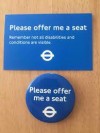SEaTSS can support students with this condition.
To refer to SEATSS please use this link:
https://eforms.redbridge.gov.uk/single-point-of-access-referral-form-for-education-support/
National Center for Health, Physical Activity and Disability have produced a range video's showing some warm up, aerobic, and stretching exercises- a really useful link to share with PE staff. …
Tomcat Trikes in action
A variety of stretches for beginner wheelchair basketball players, but could be usd with students who are in a wheelchair. Always ensure you seek advice for student's physiotherapist if you …
Students with muscular dystrophy will have exercise/ stretch programmes from physios/ medical teams.
Staff in school are usually asked to try to incorporate these exercises into the school day.
Understandably, some students are not keen on doing these exercises.
These suggested activiities, are to provide some additional fun/ themes to the exercises- hopefully meaning the students will engage for longer.
These are addiitonal fun elements to complement the formal exercise plan provided by the medical team.

Available from:
TfL have recently introduced a badge to help Adults and Children who may have difficulty standing/ waiting on all TfL transport. It is designed to be supportive for hidden disabilities and medical conditions. The badges are free- you do notneed…
The average age at diagnosis is 11 years, but there is a wide age range.
Symptoms usually begin in childhood.
The clinical severity varies from person to person.
The early symptoms can be;
Whizz-Kidz is a charity aiming to provide disabled children and young customised mobility equipment, training, advice and life skills.
This Charity provides equipment to children that is not available on the NHS. They also run Wheelchair training courses/ Mobility centres in Dagenham and Havering.
A UK wide charity providing advice, information and support to parents of all disabled children.
Here is a useful summary outlining who could apply and the criteria.